INTRODUCTION
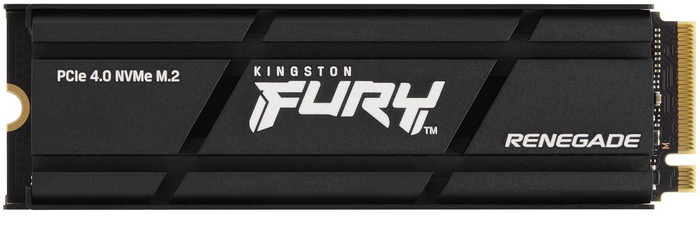
It really does seem that unlike CPUs the more we climb in memory and storage bandwidth temperatures are beginning to pose a real issue and right now we see this with both high-frequency (6600MHz+) DDR5 RAM kits and PCIe Gen5 M.2 NVMe SSD models. Heatsinks with active cooling seem to be just enough to resolve such issues but for most people the following question arises, why even have those issues if you can avoid them? In regards to SSDs the answer is simple really, PCIe 4.0 Gen4 models are clearly fast enough to cover even the most demanding users and under normal use temperatures are clearly not a concern. Still since normal use doesn't apply for everyone out there some manufacturers have equipped their top models with high-efficiency heatsinks in order to cover every possible scenario (including PlayStation 5 usage) and the FURY Renegade model by Kingston is among them.
Kingston Technology Europe Co LLP and Kingston Technology Company, Inc., are part of the same corporate group (“Kingston”). Kingston is the world’s largest independent manufacturer of memory products. From big data, to laptops and PCs, to IoT-based devices like smart and wearable technology, to design-in and contract manufacturing, Kingston helps deliver the solutions used to live, work and play. The world’s largest PC makers and cloud-hosting companies depend on Kingston for their manufacturing needs, and our passion fuels the technology the world uses every day. We strive beyond our products to see the bigger picture, to meet the needs of our customers and offer solutions that make a difference. To learn more about how Kingston Is With You, visit Kingston.com.
Just like Lexar and their NM800 PRO line Kingston just announced the heatsink versions of their highly popular FURY Renegade line of PCIe 4.0 Gen4 M.2 NVMe SSDs. Unfortunately, i didn't get the chance to test the non-heatsink version of the 2TB variant which i have here with me today but aside the heavy SNIA tests i don't expect the extra aluminum heatsink (PS5 compatible) to make a difference with anything else. Under the hood of the FURY Renegade line (available in 500GB/1TB/2TB/4TB capacities) we find the 8-channel tri-core (32-bit ARM Cortex R5 CPUs) PS5018-E18 NVMe v1.4 compatible NAND flash controller by PHISON paired with 176-layer 3D TLC NAND flash and 2GB of DDR4L SDRAM (for the 2TB model). The PS5018-E18 NAND flash controller by PHISON features their 4th Gen LDPC engine (low-density parity check) along with end-to-end data path protection, wear levelling, thermal throttling (70 degrees Celsius limit), TRIM, bad block management, dynamic range SLC cache and SmartECC (RAID ECC). Finally, Kingston covers the entire FURY Renegade line with a 5-year limited warranty and as for endurance numbers it reports 500TBW for the 500GB model, 1000TBW for the 1TB model, 2000TBW for the 2TB model and 4000TBW for the 4TB model (MTBF of 1.8 million hours applies for all).
SPECIFICATIONS AND FEATURES

THE FURY RENEGADE 2TB
Typically, the front of the box is taken by a product picture, the company logo and both the capacity and advertised performance of the drive.
Another product picture can be seen at the rear of the box (this time with the drive inside a PS5) right over a product description in many languages, Kingston contact information and a sticker with the serial number and barcodes.
Just the FURY Renegade M.2 NVMe drive is placed inside the box (with the heatsink the drive is 10.5mm thick - the interior of the box has the Acronis software serial printed on it).
A sticker on the other side of the heatsink contains information such as the capacity of the drive, several certifications and its serial number and barcode.
The PS5 compatible heatsink consists by 2 pieces held in place with 4 screws.
On the top side of the PCB, we find the E18 NAND flash controller by PHISON together with a single 1GB DDR4L SDRAM module and 4 3D TLC NAND flash modules.
Moving to the opposite side we find one more 1GB DDR4L SDRAM module and 4 more 176-layer 3D TLC NAND flash modules.
TEST BED
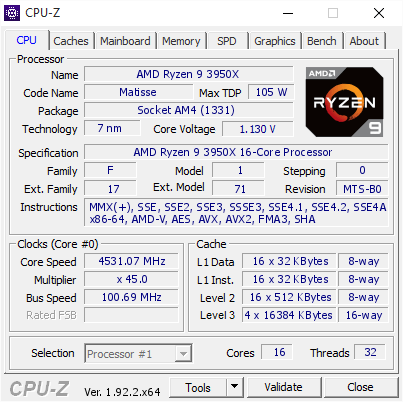

TESTING METHODOLOGY
Not long after I first started testing SSDs back in 2008, I concluded that it's almost impossible for any single benchmark suite to accurately measure their performance and that's why in certain benchmark suites we see amazing read/write performance numbers with some drives while in others things are quite different. The reason behind this is that some benchmarking suites are configured to read and write random chunks of data while others read and write constant (sequential) ones. So that's why i always use a very wide selection of benchmarking suites including AIDA64, HD Tach RW, HD Tune Pro, Crystal Disk Mark, Sisoftware Sandra Pro, AS SSD, IOmeter and ATTO. To get the most accurate results each test gets repeated a total of 6 times with the average performance numbers recorded into the charts*/****. Also, as of February 25th 2015 our results will also include the Storage Networking Industry Association’s (SNIA) IOMeter tests. These tests include a 12 Hour write test used to “simulate” performance degradation over time and a mixed workload test which basically shows what you can expect when using an SSD continuously for roughly two hours. Unfortunately, due to the time required for these tests they get repeated a total of 3 times and not 6 as the above.
Many people have made inquiries about our charts in the past so once again please do keep in mind that the Charts have the average performance numbers of each drive recorded and not the peak (highest) ones. Also, although every single one of these programs can help potential buyers choose the right drive for their needs you should also remember that from any kind of benchmark up to real world usage the gap is not small (and usually most differences will go unnoticed by most people). All tests were performed in a fresh Windows 10 Pro x64 installation complete with every update up to the date of this review.
* Since November 2018 the SSD comparison charts have been divided to 2.5” and M.2 models to reduce their growing size.
** Unless stated otherwise the Ryzen 9 3950x based Test Rig used for M.2 Gen 4 SSD reviews is not located in the lab.
*** As of January 2021 for Gen 3x4 models I’ll be using the Core i9-7980XE test rig (after numerous tests the up to 6% difference in read & write performance compared to the i7-6700 system simply wasn’t enough to justify having an extra test rig around).
**** Since February 2022 M.2 NVMe Gen3 and Gen4 SSD drives are placed in different charts.
TEST RESULTS - AIDA64 / ATTO


TEST RESULTS - HD TACH RW / HD TUNE PRO


TEST RESULTS - SISOFTWARE SANDRA PRO / CRYSTAL DISK MARK


TEST RESULTS - AS SSD / IOMETER
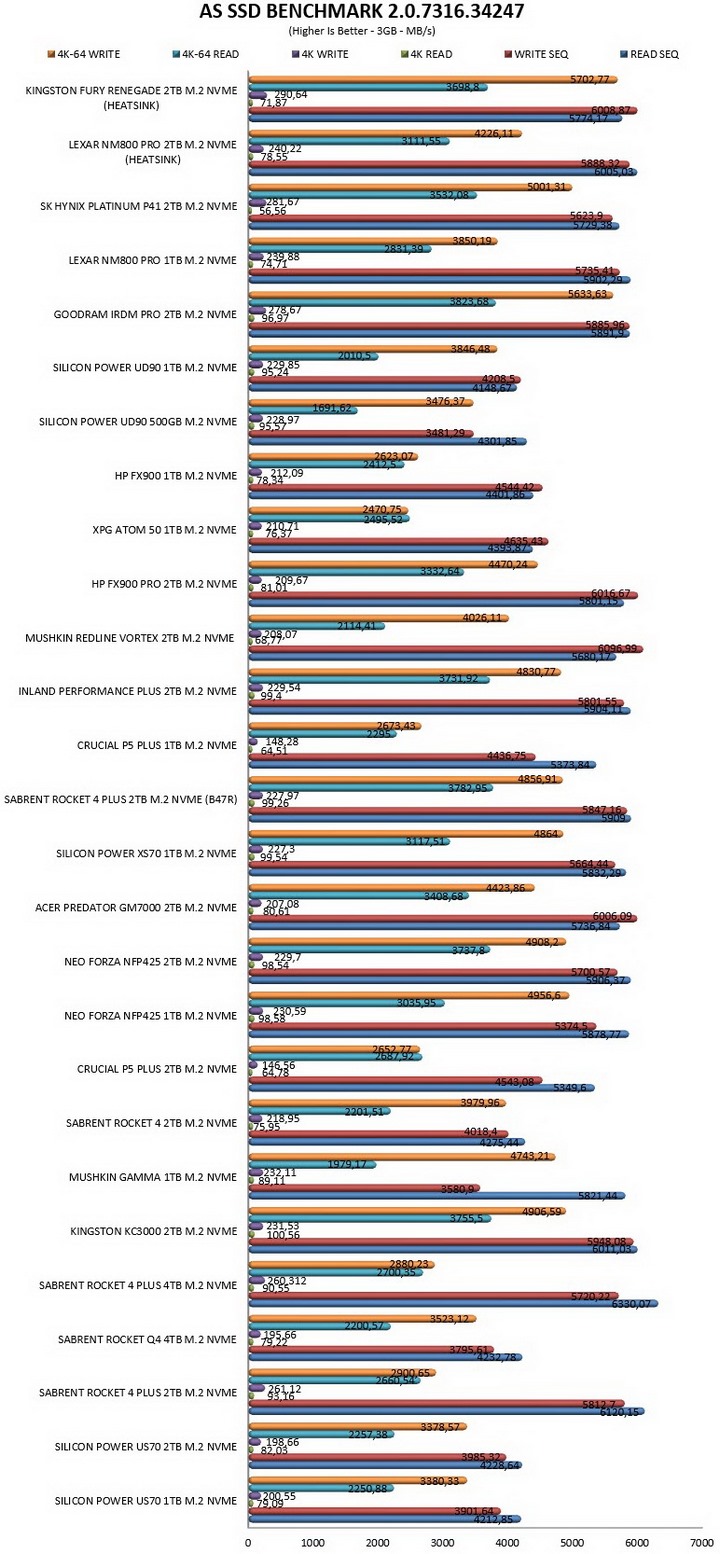
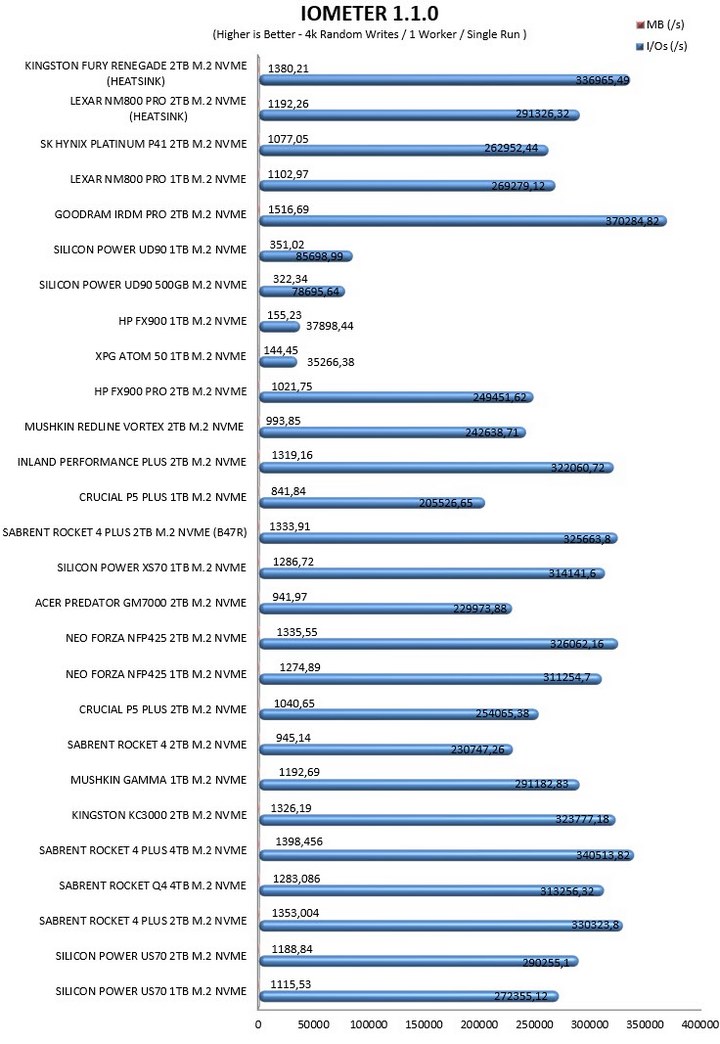 .........
.........
TEST RESULTS - IOMETER SNIA
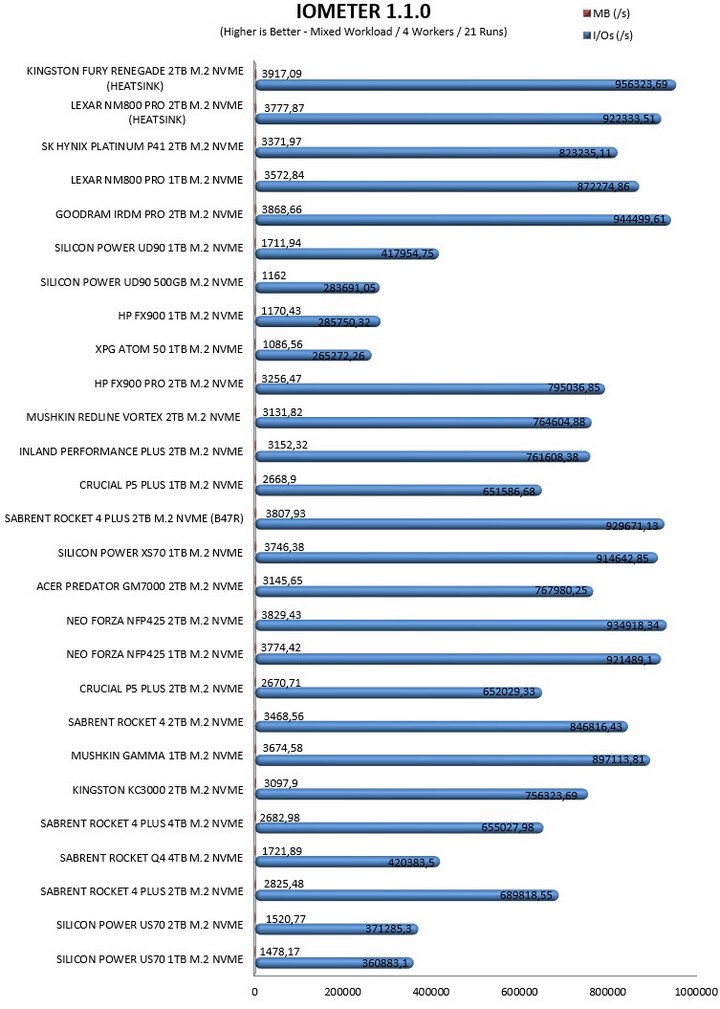
CONCLUSION
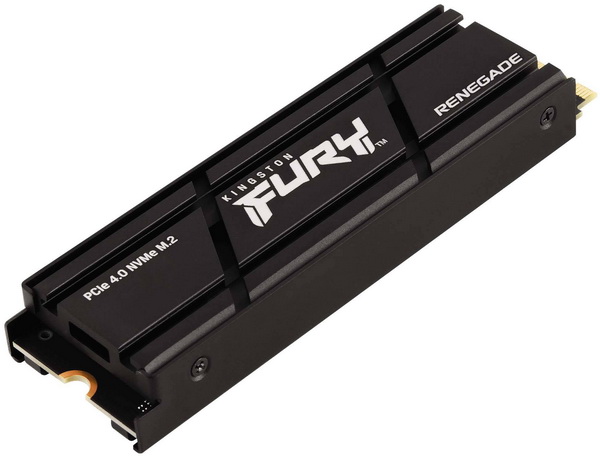
In case you haven’t noticed the compact heatsink used by Kingston with their FURY Renegade line is pretty much identical to what Lexar has used with their NM800 PRO line so they both do a great job with reducing thermal throttling as much as possible during very heavy/intensive workloads like the SNIA ones in my charts. Aside helping with temperatures, the heatsink is also PlayStation 5 compatible so that’s another plus if you’re looking to get an SSD for your console. As for performance the FURY Renegade 2TB model does extremely well and even though i wasn’t able to surpass 7000MB/s in average performance it’s clearly one of the fastest models to arrive in the lab, to date. The FURY Renegade may not excel in some of the “light” workload tests as you can see from the charts but it does come up on top in the “heavy” ones so it really comes down to what your use will be for this SSD (especially in terms of long writes).
Retailing for USD244.99 inside the USA (Amazon.com) and for around 250Euros inside the EU the heatsink version (SFYRDK/2000G) of the FURY Renegade 2TB PCIe 4.0 Gen4 M.2 NVMe SSD by Kingston lands between several similar performance drives. Overall, the FURY Renegade is a great SSD, yes it may not be the fastest out there but thanks to its SNIA results it could be the ideal drive, either during heavy workloads or long gaming sessions with your PS5 and for that it gets the Platinum Award.

PROS
- Excellent Performance Levels
- Endurance (2000TBW / 1.8 Million Hours MTBF)
- Available With / Without PS5 Compatible Heatsink
- Limited Thermal Throttling (Heatsink)
- Acronis Disk Cloning Software (Serial)
- 5 Year Limited Warranty
CONS
- Price (For Some)

 O-Sense
O-Sense

.jpg)



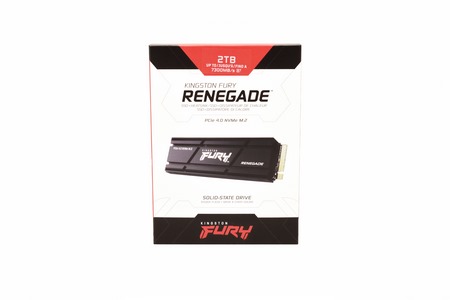
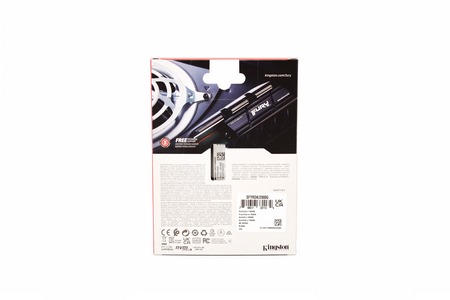
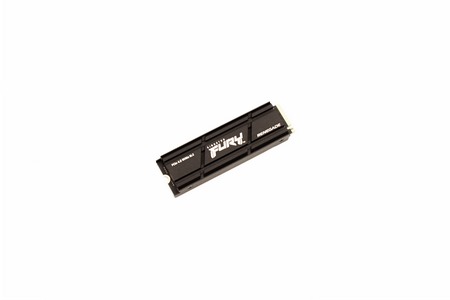
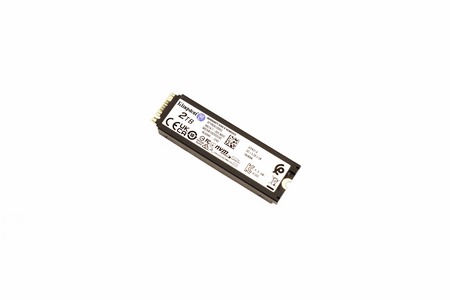
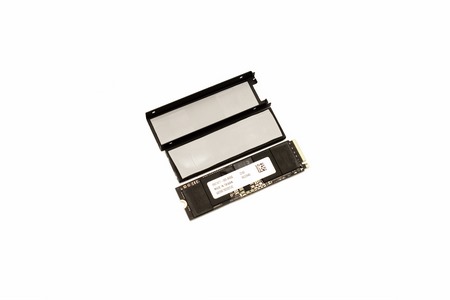
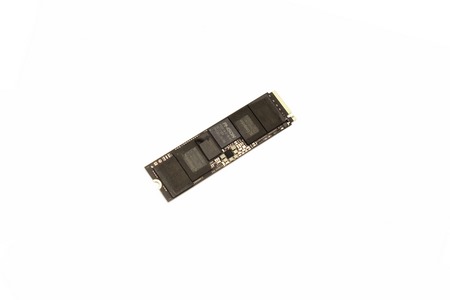
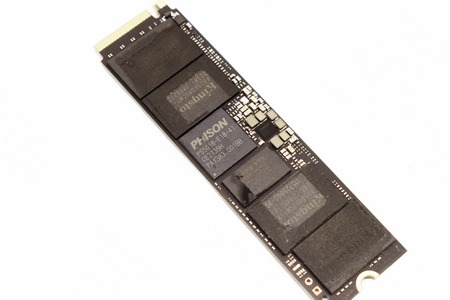
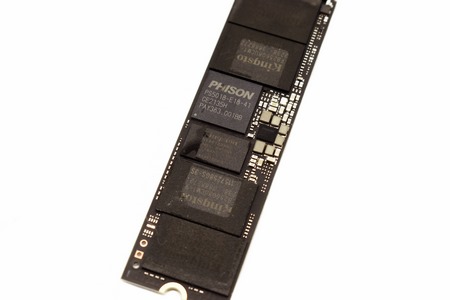
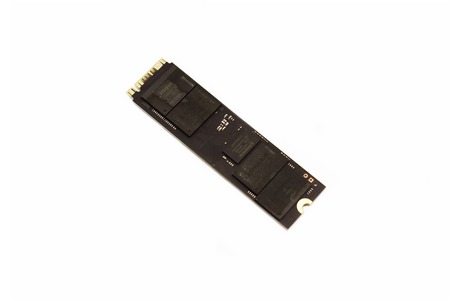
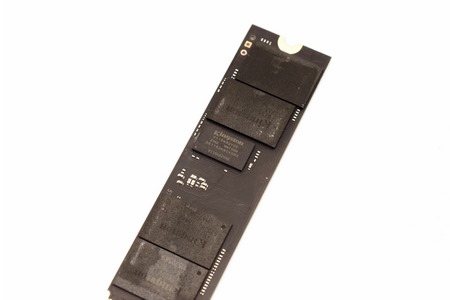
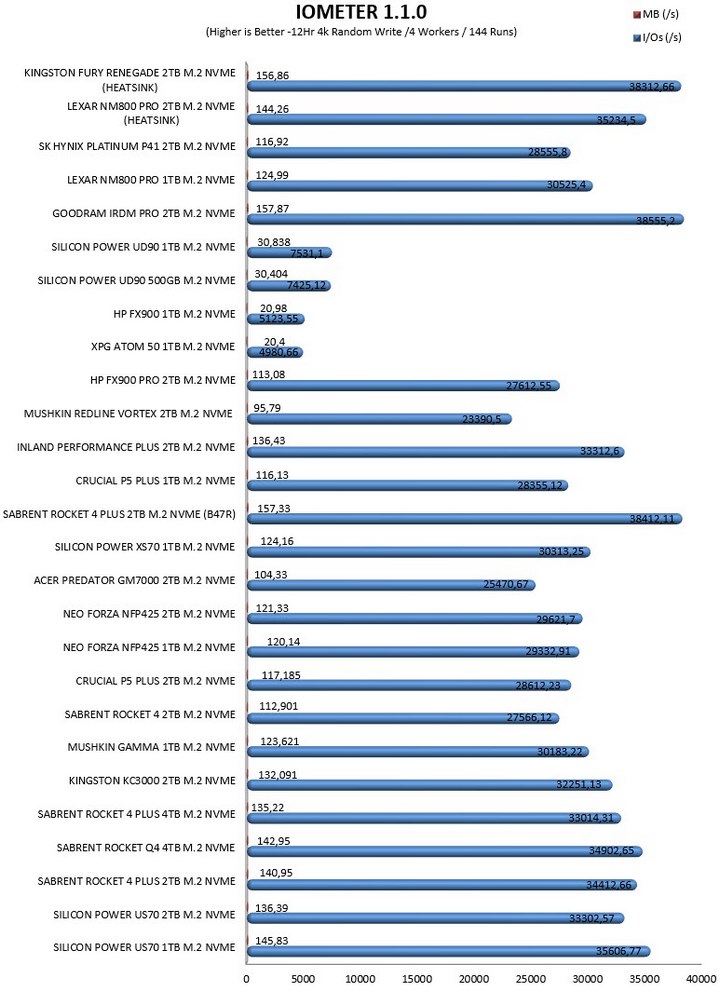
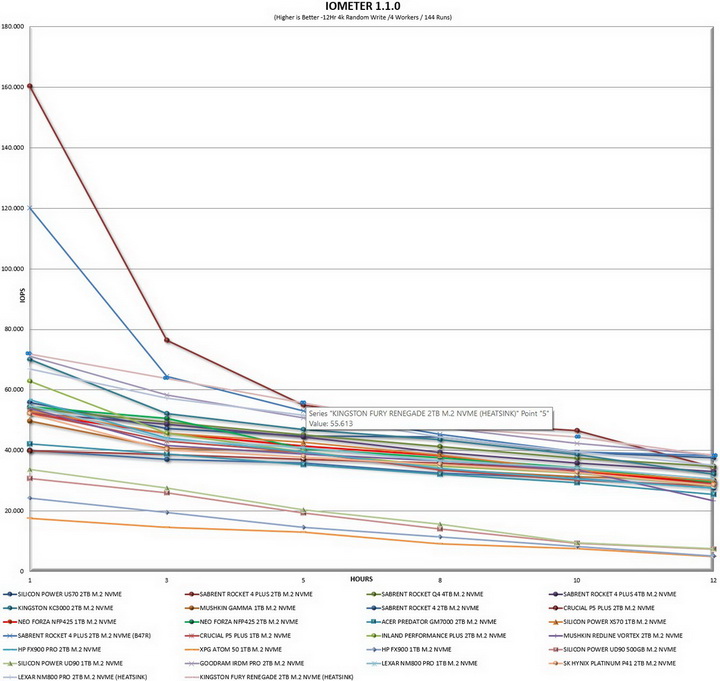


.png)

